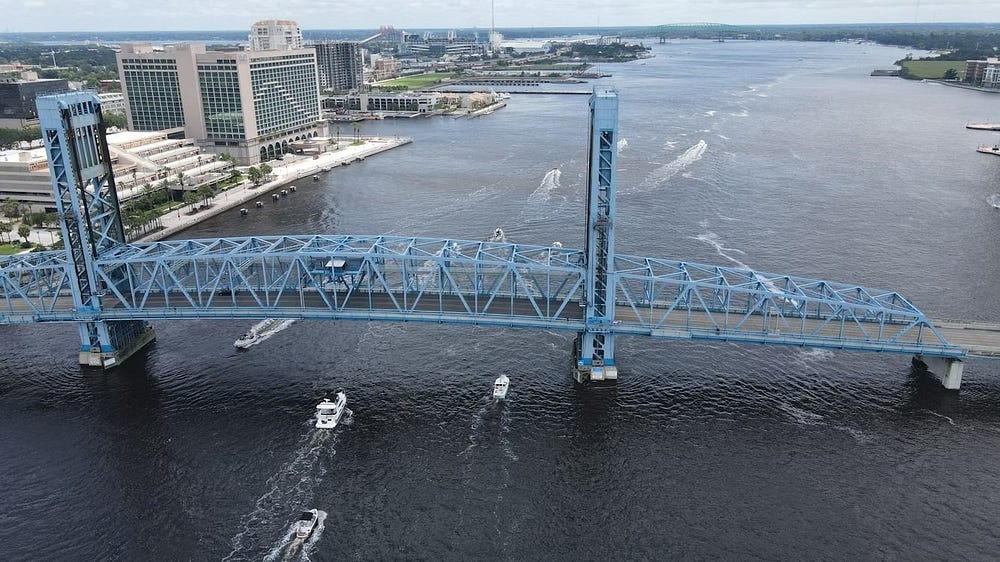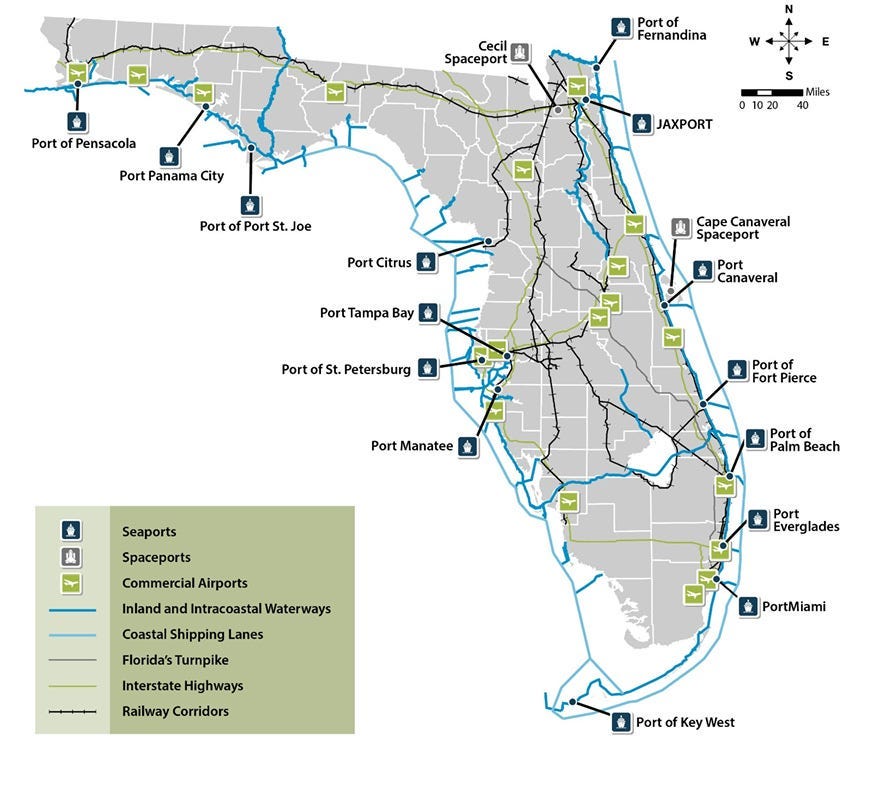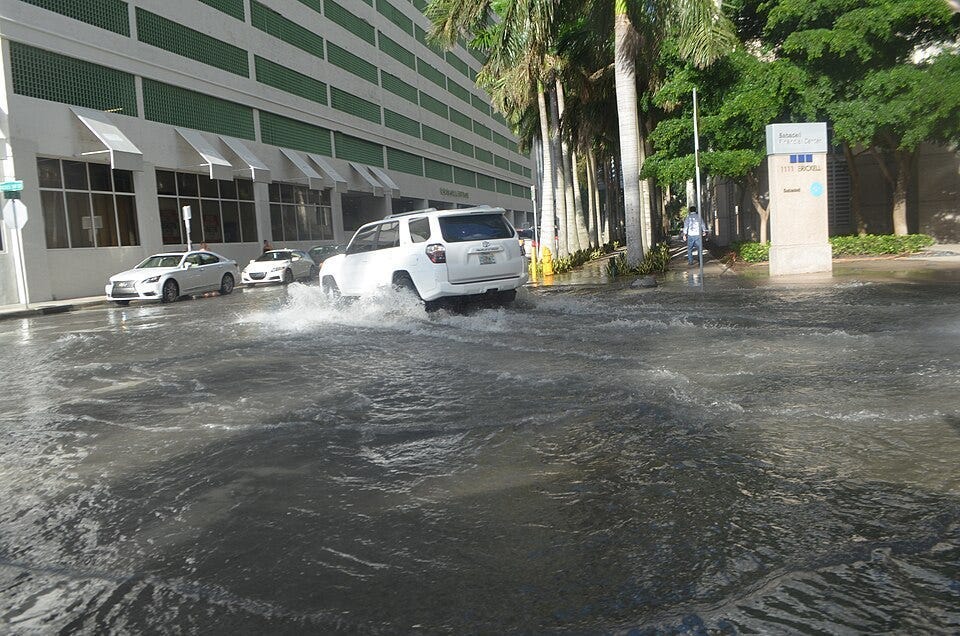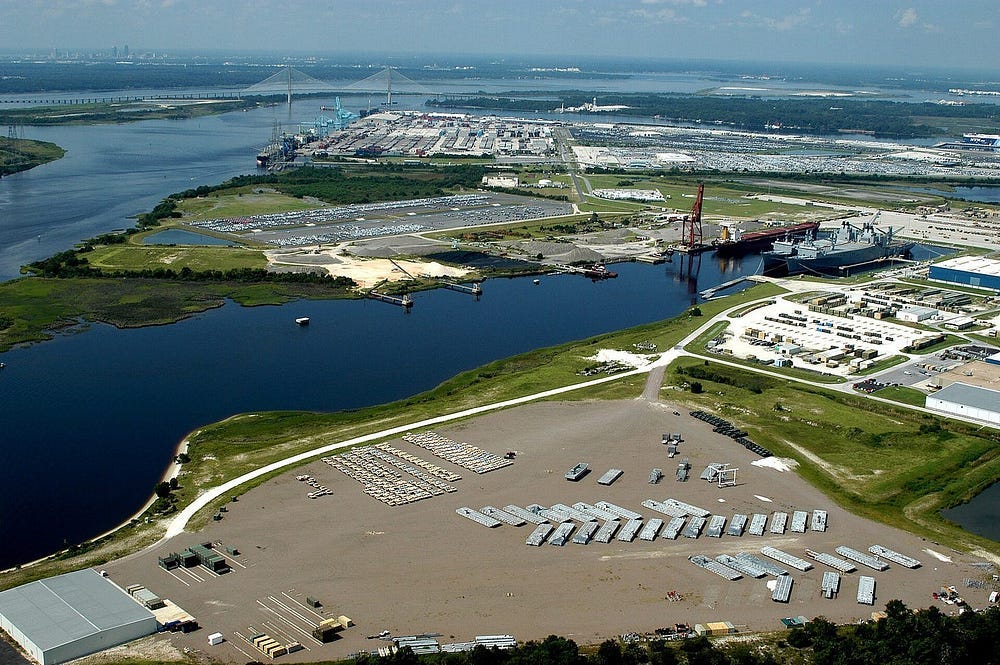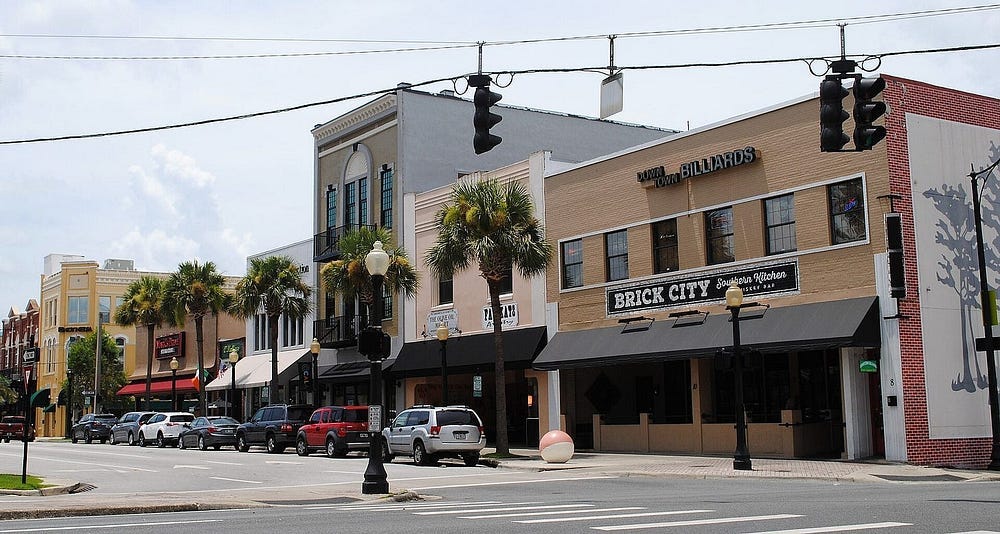Why Florida’s Wealth is Written in Water
Florida’s economy runs on water. Learn what inland ports, Singapore’s strategy, and climate resilience can teach us about building smarter, stronger cities.
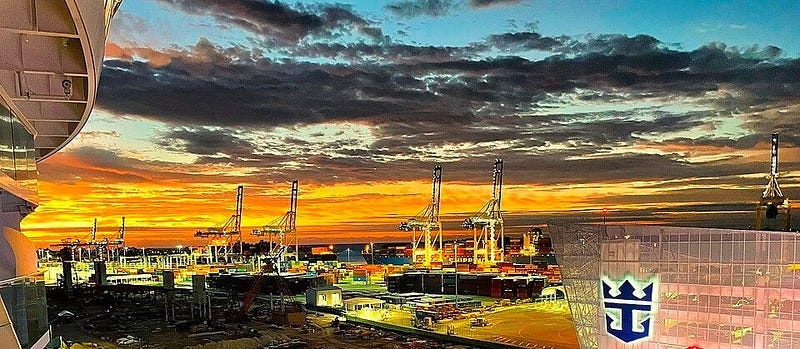
The Unmatched Efficiency of Waterborne Transport
Florida’s economy has always flowed with water — from the St. Johns River, where Timucuan Indians and early settlers once paddled goods, to today’s canals. But in a century defined by climate disruption and global competition, the question isn’t whether Florida will grow – it’s whether we can grow smartly by leveraging our most resilient infrastructure: water. While Florida’s ports and coastal cities dominate headlines, the state’s inland waterways are an underrated force in its economy. Let’s explore how blue infrastructure — Florida’s network of canals, rivers, ports, and coasts — can power the state’s future: Consider this:
Fuel Efficiency: Barges move freight *514 ton-miles per gallon* of fuel — outperforming trains (202 ton-miles) and trucks (59 ton-miles).
Clean & Quiet: Water transport produces negligible air pollution. Unlike highways or rail, it adds no noise or congestion. In a state facing intensifying climate risks and rising emissions, barge-based logistics offer a lower-carbon, climate-resilient solution
Safety First: Barges are the safest mode for transporting hazardous materials, a critical advantage for Florida’s chemical and agricultural industries.
(Source: Arkansas Waterways)
Florida’s water transport isn’t just cost-effective — it’s a quiet strength and a key piece of blue infrastructure that can be further harnessed to compete globally. Every gallon saved and every ton moved more cheaply by water strengthens Florida’s position in global trade.
Florida’s Underused Waterway Superpower
Florida’s rivers and canals are a latent superpower… While Florida’s heavy reliance on highway expansion contrasts with the underutilization of its waterways for freight movement. This inefficiency represents a significant opportunity to unlock a more resilient, prosperous Florida.
Inland Port Potential: The St. Johns River — 310 navigable miles from Sanford to Jacksonville — moves just 5% of Central Florida’s freight (vs. the Rhine’s 200M tons). Fix shallow dredging and add rail links, and it becomes a climate-proof trade artery
Intermodal Gaps: Less than 15% of Florida’s cargo moves by rail, and congested highways like I-95 and I-4 strain under truck traffic. We’ve all been stuck in gridlock on I-4 or I-95, surrounded by rumbling semi-trucks, wishing for a better way. Picture those trucks replaced by barges gliding down the St. Johns River, moving goods quietly, efficiently, and emission-free – a cleaner, stronger Florida we can build together.
Climate Resilience: Unlike roads, waterways don’t buckle under extreme heat or require costly repairs after storms. Investing in water-based logistics is a hedge against climate disruptions.
The Unbreakable Rule of Economic Geography
Sun Tzu wrote: “Victorious warriors win first and then go to war, while defeated warriors go to war first and then seek to win. Throughout history, every great trading civilization – from Venice to Singapore – understood a critical truth: water writes the rules of wealth. Singapore turned a cramped island into the world’s busiest port. Florida has even more to work with: 1,350 miles of coastline, 14 deepwater ports, and a Panama Canal shortcut. Yet it risks squandering this – not from lack of resources, but by not fully embracing its potential. Florida is no exception. Its economic geography closely follows its waterways:
The Port of Miami drives $61 billion a year, more than some entire Caribbean economies. Tampa Bay adds $34.6 billion through ports, cruises, and shipbuilding. JAXPORT moves over 10 million tons annually — deepwater access that saves businesses millions.
By contrast, inland cities like Gainesville, only 80 miles from the coast, face what might be called a “dry tax” — higher shipping costs, slower logistics, and weaker linkages to global trade routes. This isn’t random. It’s geographic destiny. While Florida doesn’t sit at a chokepoint like Singapore, the lesson is universal: invest in geography-smart infrastructure and resilience — not just roads and rail.
How to Hack Geography
1. Turn a Chokepoint into an Advantage: Florida has Panama Canal access, but Miami’s port investments trail Singapore by decades.
2. Fix Inland Links: Inland cities could shift to air cargo or rail, like Memphis, instead of relying on clogged highways.
3. Plan Before the Next Crisis: Florida lost over $1 billion to floods in 2023 — funds that could have built 50 miles of seawalls. According to NOAA, Florida faces some of the highest annualized flood losses in the nation.
Florida’s Other Water Risk: Hurricanes
While long-range forecasts provide a general idea of storm activity, historical landfall patterns remind us that hurricane risk is uneven. South Florida has been the state’s hotspot, followed by the Panhandle. North Florida, from Jacksonville to Tallahassee, sees fewer strikes.
Still, it only takes one hurricane to disrupt an entire region. Resilience planning isn’t optional — it’s essential.
Hurricanes grab headlines, but sea level rise is the slow bleed. Each inch of rise reduces barge weight capacity by 1–2% (due to bridge clearances and channel depths). For the St. Johns River — which moves everything from phosphate to oranges — that could mean $500M/year in lost trade by 2040 if no action is taken
Just as waterborne trade brings economic opportunity, waterborne storms can bring massive losses. A resilient Florida prepares for both.
Rewriting Florida’s Future
Florida stands at a crossroads. It can defend and expand its water-based economic edge — or continue to underinvest and fall behind global trade leaders. Here’s how coastal cities can rewrite their destiny:
For Coastal Cities (Miami, Tampa, Jacksonville):
Protect the golden goose — ports, reefs, and aquifers are irreplaceable economic assets.
Expand inland rail links to distribute trade more efficiently — similar to Rotterdam’s rail network into Europe.
Invest in resilience now — mitigating risks before they escalate.
Inland communities like Gainesville and Ocala can partner with ports and leverage universities to share in Florida’s water-driven prosperity.
The Singapore Blueprint: Lessons for Florida
Florida has what Singapore could only dream of: space, resources, and natural waterways.
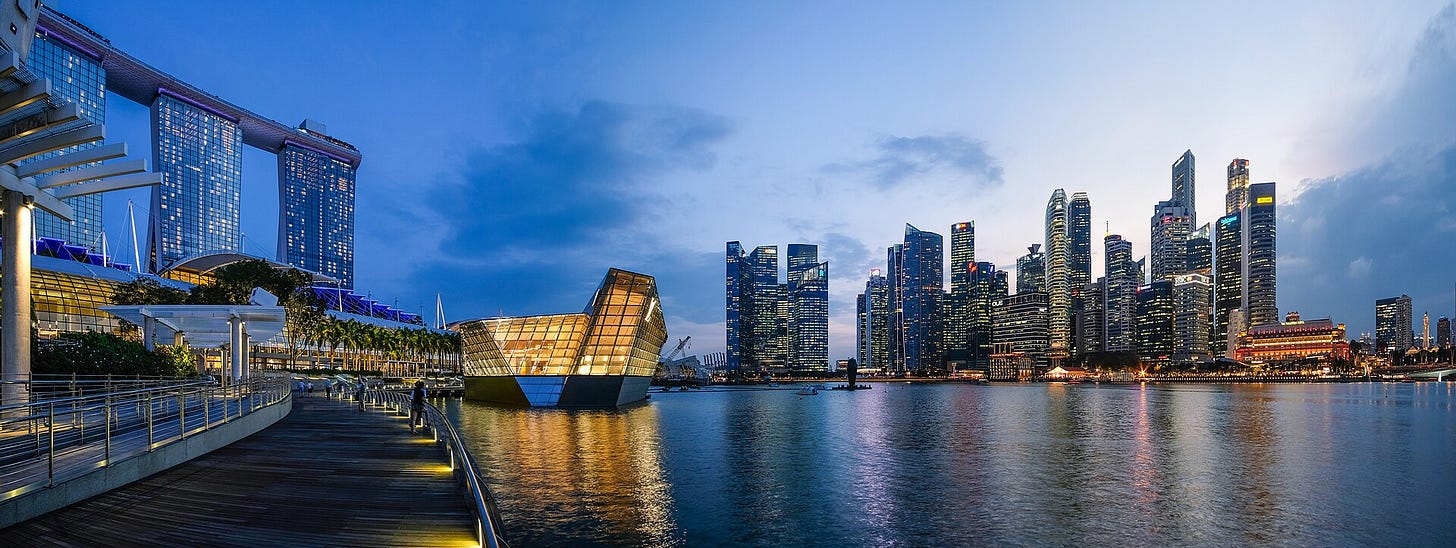
Yet while Singapore turned a mosquito-infested swamp into the world’s busiest port, Florida hasn’t fully tapped its rivers and coasts. (Read more in How Singapore Turned Geography Into Power for a deeper look at how geography shaped Singapore’s rise.) Result? Singapore handles seven times more trade per mile of coastline – a gap we can close with bold, forward-thinking action. Here’s what they did right:
Treating ports as sovereign assets — not just infrastructure.
Pre-building resilience (raising coastlines before disasters, not after).
Forcing cities to specialize (coasts for trade, inland for tech — no sprawl).
Florida has more advantages than Singapore ever did. But without the same urgency, it risks becoming a cautionary tale instead of a competitor.”
Bottom Line
Florida’s prosperity has always flowed from its coastlines and rivers. Building resilience isn’t just about adding more concrete — it’s about learning from geography. It means strengthening deepwater ports instead of expanding highway sprawl.
This isn’t a coast versus inland debate. It’s a question of whether Florida invests in its geographic strengths or ignores them. Waterways shaped Florida’s past — especially rivers like the St. Johns that were lifelines for early settlements. Florida’s blue infrastructure can fuel its future — if we choose to invest in it boldly, strategically, and with the urgency it deserves. Will water fuel the state’s future, or will the next generation watch that advantage slip away?
Disclaimer: The views expressed in this article are solely my own and do not reflect those of any public agency, employer, or affiliated organization. This blog aims to educate and empower readers through objective geographic and planning insights, fostering informed discussion on global and regional issues.

